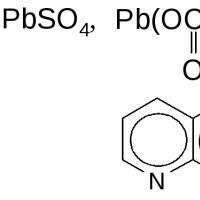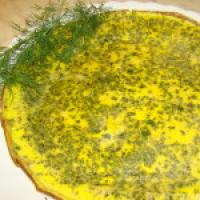Test vegetative organs of angiosperms. Test Vegetative organs of plants. material for preparing for the Unified State Exam (GIA) in biology (grade 9) on the topic. The internal structure of the leaf is presented
Test work Vegetative organs of plants
1. In the cells of which tissue do photosynthesis occur?
1) accumulative 2) conductive 3) integumentary 4) assimilative
2. Where do adventitious roots come from?
1) from the stem 2) from the lateral root 3) from the root 4) from the main root
3. How many cells does a root hair consist of?
1) from several long and thin 2) from one long and thin 3) from one short and thin
4) from many long and thin
4. The root of a young cotton shoot grows 2-3 cm per day. What causes this growth? 1) due to the consumption of large amounts of nutrients by the root
2) due to buds on the rhizome 3) division of the apical bud 4) cell division at the tip of the root
5. The cavity inside the cytoplasm containing cell sap is called:
1) plastids 2) vacuole 3) contractile vacuole 4) digestive vacuole
6. Taproot system of: 1) beans, 2) corn, 3) sorghum, 4) chin, 5) turnips 6) barley 7) rye.
1) 1,2,4,5,6 2) 2,4,5,6,7 3) 1,4,5 4) 1,4,6,7
7. Root vegetables form: 1) tulip, 2) potatoes, 3) Jerusalem artichoke, 4) carrots, 5) garlic; 6) mint.
1) 1,6 2) 4 3) 2,3 4) 2,4
8. The root consists of four clearly distinguishable zones: 1) cap, 2) growing zone, 3) suction zone, 4) conducting zone. Which cells are constantly multiplying?
1) 1,2 2) 1 3) 2 4) 4
9. The root growing from the stem is called...
1) subordinate 2) main 3) fibrous 4) lateral
10. The system of adventitious roots is called...
1) main 2) auxiliary 3) core 4) fibrous
11. Select plants with tap roots: 1) watermelon; 2) corn; 3) poppy; 4) cotton; 5) onion; 6) sorghum; 7) peas.
1) 1,2,3,6 2) 1,3,4,7 3) 2,5,6 4) 5,6,7
12. Cork, bast, cambium, wood, pith make up the internal structure...
1) root 2) stem of a woody plant 3) rhizome 4) modified shoot
13. The cells of the main leaf tissue adjacent to the upper epidermis are called...
1) spongy 2) columnar 3) compact 4) closing
14. A group of plants that have a fibrous root system - ... 1) tomato, cucumber, wheat
2) rye, beans, sorghum 3) rye, wheat, sorghum 4) potatoes, corn, sorghum
15. The parenchyma of the cortex is formed...
1) epithelial tissue 2) educational tissue 3) conductive tissue 4) basic tissue
16. Plants receive nutrients necessary for life from cell to cell through...
1) sieve tubes 2) pores 3) vessels 4) intercellular spaces
17. What part of the cell is in constant motion?
1) core; 2) cytoplasm; 3) ribosomes; 4) vacuoles; 5) plastids.
1) 4 2) 1,2,3,4,5 3) 2,5 4) 2
18. What are the young, thin cells between the bark and wood called?
1) periderm 2) parenchyma of the cortex 3) prosenchyma 4) cambium
19. Root cortex cells:
1) live, 2) dead, 3) round, 4) elongated, 5) with a thin shell, 6) with thick shells.
1) 2,4,6 2) 1,3,5 3) 1,4,5 4) 2,3,5
20. Which group of plants has well-developed bast fibers?
1) oak, 2) onion, 3) rye, 4) maple, 5) sphagnum, 6) linden, 7) spirogyra.
1) 2,3,7 2) 1,6,7,4 3) 1,4,6 4) 4,2,7,1
21. Indicate plants with creeping stems:
1) melon, 2) bindweed, 3) watermelon, 4) grapes, 5) tomato, 6) pumpkin, 7) sunflower.
1) 4,5,7 2) 2,6,7 3) 1,2,3 4) 1,3,6
22. Name plants that grow very slowly:
1) pumpkin; 2) grapes; 3) juniper; 4) pear; 5) cherries; 6) peas
1) 3,4 2) 1,3 3) 2,3 4) 1,5,6
23. The rhizome does not form
1) fern 2) potatoes 3) mint 4) onions
24. The section of the stem from which leaves grow is called...
1) node 2) leaf axil 3) growth cone 4) internode
25. How many guard cells make up the stomata?
1) 4 2) 2 3) 8 4) 1
26. Adjacent to the lower epidermis of the leaf is the main...
1) compact 2) spongy tissue 3) columnar tissue 4) mechanical
27. Indicate a plant with alternate leaves: 1) cotton; 2) apricot; 3) cloves; 4) mint; 5) horsetail; 6) lilac.
1) 1,2 2) 1,2,4 3) 2,5,6 4) 2,3
28. Long thin tubes, the partitions in them are pierced with numerous holes and are located between the bast fibers. This...
1) sieve tubes 2) vessels 3) parenchyma 4) sclerenchyma
29. Establish the correct order of the stem structure: 1) wood; 2) cambium; 3) peel and cork; 4) bast; 5) core.
1) 3,4,1,2,5 2) 1,2,3,4,5 3) 3,4,5,1,2 4) 3,4,2,1,5
30. Shortened stems are found in plants such as...
1) plantain, rapeseed 2) dandelion, cucumber 3) dill, tomato 4) beets, carrots
31. Select plants with whorled leaves on the stem: 1) wheatgrass; 2) basil; 3) horsetail; 4) oleander; 5) dandelion; 6) cloves.
1) 2,3,5 2) 3,4 3) 1,3,4 4) 1,2,4
32. Opposite arrangement of leaves in the following plants: 1) wheatgrass; 2) basil; 3) horsetail; 4) oleander; 5) ziziphora; 6) nettle; 7) mallow.
1) 2,3,5,7 2) 1,3,4,7 3) 2,4,6,7 4) 2,5,6
33. From the list of plants, select light-loving plants: 1) potatoes; 2) birch; 3) violet; 4) strawberry; 5) fern; 6) tomato.
1) 1,3,6 2) 1,2,6 3) 2,3,5 4) 1,2,5
34. Among the listed plant organs, find a shoot: 1) tuber, root crop, flower, head of cabbage 2) tuber, flower, annual branch of shrubs, young shoot from a seed
4) a head of cabbage, a vegetative bud, a root vegetable, a perennial branch of a bush
3) flower, grape cutting, perennial tree branch
35. Select cultivated, annual herbs: 1) shepherd's purse; 2) wheat; 3) rice; 4) nightshade; 5) white pigweed; 6) melon.
1) 1,2,3 2) 2,3,4 3) 2,3,6 4) 2,5,4
36. Curly stem in the following plants: 1) poppy; 2) grapes; 3) pepper; 4) bindweed; 5) pumpkin.
1) 4 2) 2 3) 4,5 4) 1,2,3
37. Name the plants that have compound leaves
1) clover, poplar, peas 2) chestnut, acacia, peas 3) poplar, yantak, acacia 4) beans, barley, flax
38. Indicate the plants that have a taproot system and reticulate leaf venation. 1) dandelion; 2) rice; 3) onion; 4) tulip; 5) dill; 6) tomato.
1) 1, 5, 6 2) 2, 3, 5 3) 1, 3, 5 4) 4, 5, 6
Test on the topic: Vegetative organs of plants
Choose the correct answer.
Vegetative organs include:
A. Escape
B.Flower
V.Fruit
D.All answers are correct
2. The root performs the functions:
A. Absorbs water and nutrients from the soil and carries them to the stem
B. Fixes and holds plants in the soil;
B. Serves as a storage facility for nutrients
D. All answers are correct
3. Based on the type of origin and development, roots are divided into:
A. Main root;
B. Lateral root;
B.Adventitious root;
D.All answers are correct;
4. The main root is very well developed:
A. Fibrous root system;
B. Tap root system;
B. Answers 1 and 2
D. There is no correct answer;
5. Has a fibrous root system:
A. Beans;
B. Sunflower;
B. Carrot;
G. Garlic;
6. The taproot system has:
A. Wheat;
B. Beans;
V. Millet;
G. Luk;
7. The root is divided into zones:
A. 1;
B.2;
AT 3;
G.4;
8. Educational tissue cells divide intensively and contribute to root growth and root length:
A. Divisions;
B. Rosta;
B. Suction;
G. Conducting;
9. In the zone….only individual cells divide
A. Divisions;
B. Rosta;
B. Suction;
G. Conducting;
10. Area densely covered with root hairs:
A. Divisions;
B. Rosta;
B. Suction;
G. Conducting;
11. The zone is responsible for supplying other plant organs with absorbable substances:
A. Divisions;
B. Rosta;
B. Suction;
G. Conducting;
12. Powerful succulent underground organs of some plants:
A. Korneklubni
B. Root vegetables
B. Answers 1 and 2
D. There is no correct answer.
13. Nutrients are deposited only in the main root:
A. Korneklubni
B. Root vegetables
B. Answers 1 and 2
D. There is no correct answer.
14. Escape is:
A. Stebel
B. Leaves
V.Kidneys
D. All answers are correct
15. The place where the leaf is attached to the stem is called:
A. Internode;
B. Knot;
B. Leaf sinus
D. All answers are correct
16. The distance between adjacent nodes on the stems is called:
A. Internode
B. Knot
B. Leaf sinus
D. All answers are correct
17. The angle formed by the stem and the leaf extending from it is called:
A. Internode
B. Knot
B. Leaf sinus
D. All answers are correct
18. Frame, the central support of the plant, connecting its underground and above-ground parts:
A. Root
B. Stem
V. Liszt
G. Flower
19. Main functions of the stem:
A.Opornaya
B. Conductive
B. Storage
D. All answers are correct
20. According to the direction of growth of the plant stem, there are:
A. Erect
B. Creeping
B. Creeping
D. All answers are correct
21. The outermost layer of the trunk6
A.Kora
B. Cambium
B. Wood
G. Core
22. This layer is located under the bark, between the bast and wood:
A.Kora
B. Cambium
B. Wood
G. Core
23.Lits under the cambium to the center of the phloem:
A.Kora
B. Cambium
B. Wood
G. Core
24. Central part of the stem:
A.Kora
B. Cambium
B. Wood
G. Core
25. Transports liquid from roots to stems:
A. Xylem
B. phloem
B. Answers 1 and 2
D. There is no correct answer
26. Delivers nutrients obtained in the leaves to the roots and other parts of the plant:
A. Xylem
B. phloem
B. Answers 1 and 2
D. There is no correct answer
27. Elongated creeping shoots with elongated internodes:
A. Kolyuchki
B. Tuber
V. Trunks
G. Mustache
28. Allows plants - vines to occupy a vertical position:
A. Kolyuchki
B. Tuber
V. Trunks
G. Mustache
29. Protect plants from being eaten by animals:
A. Kolyuchki
B. Tuber
V. Trunks
G. Mustache
TEST on the topic “Vegetative organs”, biology.
Choose the correct answer:
1.Part of an organism that has a certain structure and performs certain functions
a) cell b) tissue c) organ d) organ system e) organism
2. Vegetative organ
a) root b) seed c) fruit d) flower e) inflorescence
3.Adventitious roots extend from
a) main root b) stem c) lateral roots
4.Type of root system, with a well-defined main root
a) rod b) fibrous
5.Dandelion root system
a) rod b) fibrous
6.Performs a protective role
7.Aerial part of the plant
8. Rudimentary shoot
a) shoot b) root c) bud d) flower e) rhizome
9. Bud with rudimentary leaves
a) vegetative b) generative
10.Develops from a generative bud
11.Birch leaf
a) simple petiolate b) simple sessile c) complex petiolate d) complex sessile
12.Type of plantain leaf venation
13.Onion stalk
14.Type of root system, with well-defined lateral and adventitious roots
a) rod b) fibrous
15. Cells are constantly dividing in the zone
a) growth zone b) division zone c) sheath d) suction zone e) conduction zone
16.Stem, leaf and bud
a) shoot b) root c) bud d) flower e) rhizome
17. Kidney located in the node
a) apical b) lateral c) adnexal d) nodular
18.Develops from a vegetative bud
a) stem b) fruit c) flower d) seed
19. Performs a support function
a) stem b) root c) flower d) leaf
20.Type of birch leaf venation
a) parallel b) arc c) mesh
21.Stem of Norway spruce
a) erect b) curly c) clinging d) shortened e) creeping
22. The female organ of a plant is: a) stamen b) pistil
Vegetative organs of a plant
1) Modified dahlia roots
A) root vegetables.
B) root suckers.
C) tuberous roots.
D) aerial roots.
E) root pores.
2) The nutrient supply of wheat grains is located in:
A) spine.
B) stem.
C) endosperm.
D) cotyledon.
E) kidney.
3) Wide base of the leaf vagina
A) cereals.
B) Rosaceae.
C) nightshades.
D) Asteraceae.
E) legumes.
4) This node is
A) embryonic shoot.
B) growth cone.
C) thickening of the skin.
D) the area of the stem from which the leaf emerges.
E) bottom.
5) In wheat seeds
A) 2 cotyledons
B) no endosperm
C) 2 embryos
D) 1 cotyledon
E) no embryo
6) Shortened stem
A) Asters
B) Watermelon
C) dandelion
D) Ivy
E) Hops
7) In the seeds of dicotyledonous plants:
A) 1 cotyledon
B) No cotyledons
C) 3 cotyledons
D) 2 cotyledons

E) 4 cotyledons
8) Wood is typical for:
A) Leaves
B) Fetus
C) Flower
D) Stem
E) Seeds
9) Radish fruit:
A) Drupes
B) Bob
C) Achene
D) Pod
E) Berry
10) Educational fabric
A) Core
B) Wood
C) Cork
D) Cambium
E) Lub
11) Monocot plant
A) oak
B) wheat
C) buttercup
D) beans
E) peas
12) Eggplant is used for food:
A) leaves
B) stem
C) fruits
D) roots
E) kidneys
13) Substances from the leaf to the root move along:
A) wood
B) lubu
C) cambium
D) traffic jam
E) core
14) To stop the shoot from growing in length, you must:
A) Trim the tip of the shoot
B) Trim side shoots
C) Cut off the buds
D) Trim the roots

E) Cut off the leaves
15) Dicotyledons as opposed to monocotyledons:
A) have no lateral roots
B) bloom before the leaves bloom
C) have two cotyledons in the embryo
D) produce many seeds
E) are pollinated only by wind
16) Potatoes are eaten:
A) Roots
B) Tubers
C) Seeds
D) Berries
E) Fruits
17) Thickening of the stem occurs due to cell division:
A) Cambia
B) Peels
C) Wood
D) Cores
E) Luba
18) Mechanical tissue performs the function of plants:
A) Conductive
B) Support
C) storing
D) Formation of new cells
E) Starch formation during photosynthesis
19) Heat-loving plant
A) Rye
B) Clover
C) Flax
D) Cotton plant
E) Barley
20) A kidney that has been dormant for several years:
A) Insert
B) Apical
C) Subordinate clause
D) Sleeping
E) Axillary
21) Mineral fertilizers include
A) Manure
B) Peat
C) Phosphorus fertilizers
E) Humus

D) Bird droppings
22) Plum fruit
A) Drupes
B) Nut
C) Berry
D) Bob
E) Apple
23) Propagated by bulbs
A) Apple tree
B) Garlic
C) Strawberry
D) Astra
E) Beans
24) Propagated by stem cuttings
A) Narcissist
B) Rose
C) Potatoes
D) Tulip
E) Onion
25) Dicotyledonous plant
A) Colchicum
B) Plantain
C) Lily
D) Tulip
E) Sedge
26) Cold-resistant plant
A) Barley
B) Cucumber
C) Melon
D) Tomato
E) Sunflower
27) Lack of phosphorus in the soil causes
A) Slowing down of fruit formation
C) Increase in fruit sugar content
C) Death of apical buds
D) Lodging of plants
E) Leaves falling
28) Dicotyledonous plant
A) Wheat
B) Corn
C) Barley
D) Beans

E) Rye
29) The seeds are protected by the pericarp
A) Algae
B) Angiosperms
C) Gymnosperms
D) Ferns
E) Psilophytes
30) The plant needs light for
A) Photosynthesis
B) Breathing
C) Reproduction
D) Discharge
E) Evaporation
31) People grow carrots, turnips, and beets for
A) Fruits
B) Roots
C) Seeds
D) Leaves
E) Stems
32) Turns blue under the influence of iodine solution
A) Starch
B) Fat
C) Glucose
D) Gluten
E) Protein
33) The main root is formed
A) From the embryonic root
B) From the cotyledon
C) From the bottom of the stem
D) On side horses
E) On adventitious roots
34) Chamomile inflorescence
A) Panicle
B) Complex ear
C) Basket
D) Umbrella
E) Complex shield
35) Dicotyledonous plant
A) Corn
B) Rice
C) Plantain
D) Feather grass

E) Tulip
36) The number of seeds in fruits depends on the quantity:
A) stamens.
B) petals.
C) ovules.
D) sepals.
E) pistils.
37) The area of the stem between adjacent leaves is
A) node.
B) escape.
C) kidney.
D) internode.
E) sinus.
38) Expanded part of the sheet
A) leaf blade
B) scale
C) vein
D) petiole
E) stipule
39) In early spring, at a temperature of 05 0C and high soil moisture, the following seeds are sown:
A) Oats
B) Cucumber
C) Melons
D) Corn
E) Tomatov
40) Reproduces by rhizomes:
A) Rye
B) Onion
C) Tulip
D) Lily of the valley
E) Potatoes
41) Cold-resistant cultivated plant
A) Beans
B) Pumpkin
C) Oats
D) Corn
E) Cucumber
42) Garlic is propagated:
A) Usami
B) Rhizomes

C) Bulbs
D) Tubers
E) By vaccination
43) Protects the stem from unfavorable conditions:
A) Core
B) Wood
C) Cork
D) Lub
E) Cambium
44) Monocot trait
A) Parallel venation
B) Cirrus venation
C) 2 cotyledons per seed
D) Reticulate venation
E) Tap root system
45) Bulb from:
A) Jerusalem artichoke
B) Iris
C) cactus
D) Lilies
E) Aloe
46) People grow carrots, turnips, and beets for the sake of:
A) Fruits
B) Roots
C) Seeds
D) Leaves
E) Stems
47) Location of shoot growth point:
A) Axillary bud
B) Leaf bud
C) Apical bud
D) Internode
E) Accessory bud
48) Annual plants include:
A) cabbage
B) wheat
C) oak
D) beets
E) raspberries
49) A flowering plant reaching a height of 100 meters or more is:
A) maple

B) bamboo
C) poplar
D) eucalyptus
E) apple tree
50) Guard cells are found in
A) leaf
B) stem
C) seed
D) fetus
E) root
51) Special phytohormones that regulate plant irritability
A) auxins
B) pesticides
C) herbicides
D) phytoncides
E) vitamins
52) Perennial plant
A) sunflower
B) rosehip
C) radish
D) beets
E) radishes
53) Fruit of the shepherd's purse
A) pod
B) box
C) bob
D) berry
E) drupe
54) Moisture from the leaf evaporates through
A) cells of columnar tissue
B) vessels
C) stomata
D) sieve tubes
E) intercellular spaces
55). Root tubers have
A) beets
B) radish
C) dahlia
D) onion
E) carrots
56). A cutting of a cultivated plant taken for grafting is called:

A) scion
B) sprout
C) rootstock
D) escape
E) wild
57). Adventitious roots are formed
A) Only on the main root
B) On all types of roots
C) On side shoots
D) Only on the lower part of the root
E) On the stem
58). Pea stem:
A) Curly.
B) Creeping.
C) Shortened.
D) Clinging.
E) Erect.
59). Substances stop flowing from the root to the leaf if the damage is severe:
A) Semen.
B) Fruit.
C) Flower.
D) Stem.
E) Leaf.
60). Has a mustache
A) Peas.
B) Beetroot.
C) Carrots.
D) Tomato.
E) Corn.
61). Root hairs are located in:
A) Chehlike.
B) Division zone.
C) Suction zone.
D) Venue area.
E) Growth zone.
62). To obtain root crops they grow
A) potatoes.
B) carrots.
C) onion.
D) dill.
E) garlic.
63) Tube-shaped vessels are located in:
A) Cambia
B) Wood

C) Traffic jam
D) Core
E) Lube
64).The skin of the leaf forms tissue:
A) Mechanical
B) Conductive
C) Storage
D) Integument
E) Educational
65). It reproduces by rhizomes:
A) Potatoes
B) Maple
C) Tulip
D) Corn
E) Lily of the valley
66).Contains sieve tubes:
A) Cork
B) Wood
C) Cambium
D) Core
E) Lub
67).You can determine the age of a tree by:
A) Tree height
B) Number of leaves
C) Tree rings
D) Bark thickness
E) Stem thickness
68). Substances from the root to the leaf move along:
A) Traffic jam
B) Wood
C) Cambium
D) Lubu
E) core
69). The mustache is used to propagate:
A) Strawberries
B) Lilies of the valley
C) Raspberry
D) Cuff
E) Karagach
70).Seeds less than 1 mm in diameter have:
A) Pumpkin
B) Poppy

C) Peas
D) Corn
E) Beans
71).Erect stem at:
A) Ivy
B) Poplars
C) Dandelion
D) Hops
E) Watermelon.
72). The taproot system has:
A) Tulip
B) Rice
C) Sorrel
D) Wheat
E) Onion
73). From the environment, plant leaves absorb:
A) Carbon dioxide
B) Fats
C) Water
D) Mineral salts
E) Starch
74). They have an endosperm that surrounds the embryo of a monocot plant on all sides:
A) Wheat
B) Onion
C) Buttercup
D) Oak
E) Violet
75). Only in the taproot system is the root well developed:
A) Chief
B) Lateral
C) Air
D) Additional
E) Subordinate clause
76).Lentils develop into:
A) Traffic jam
B) Cambia
C) Wood
D) Loubet
E) core
77). Can be propagated by rhizomes
A) Hyacinth
B) Irises

C) Karagach
D) Raspberry
E) Strawberries
78). Monstera has well developed:
A) Aerial roots
B) Root vegetables
C) Corniopores
D) Root tubers
E) Sucker roots
79). Propagated by stem cuttings:
A) Rose
B) Potatoes
C) Tulip
D) Narcissist
E) Onion
80). In cabbage, sorrel, spinach, humans use:
A) Seeds
B) Fruits
C) Roots
D) Leaves
E) Stems
81). The root extending from the main one is called:
A) Sterzhnev
B) Air
C) fibrous
D) Lateral
E) Subordinate
82).Elongated shoots are shoots with long:
A) Kidneys
B) Stems
C) Sinuses
D) Knots
E) Internodes
83).The leaf is attached to the stem using:
A) Root
B) Veins
C) Kidneys
D) Petiole
E) Stomata
84). Plant roots in waterlogged soil suffer from a lack of:
A) Oxygen
B) Nitrogen

C) Hydrogen sulfide
D) Carbon dioxide
E) Hydrogen
85). The main root does not stand out among the rest in the root system:
A) Oats
B) Beans
C) Clover
D) Sunflower
E) Pumpkins
86). The roots growing from the stems are called:
A) fibrous
B) Subordinate clauses
C) Main
D) Rod
E) Lateral
87). Simple leaves:
A) Rosehip
B) Linden
C) Rowan
D) Karagach
E) Hemp

Elena Kumeiko
Test for 6th grade students “Vegetative organs of plants”
Test Biology assignment for 6 class on the topic:
« Vegetative organs of plants» .
1. The root is:
A) vegetative organ of a plant;
b) generative plant organ.
2. Plants have tissues:
a) muscular; b) main; c) nervous; d) connecting.
3. Absorption of nutrients from the soil plants provides:
a) root; b) stem; c) leaf; d) flower.
4. The root vegetable is a modified:
a) lateral root; b) additional root; c) main root.
5. Ability organisms restore lost parts - This:
a) reproduction; b) photosynthesis; c) regeneration.
6. Plants are:
a) gender organisms; b) view organisms; c) kingdom organisms.
7. K organic fertilizer refers to:
a) droppings; b) nitrogen; c) phosphate.
8. It is better in a fibrous root system. developed:
a) main root; b) lateral roots.
9. Photosynthesis occurs V:
a) stem; b) root; c) leaf.
10. Peat is:
A) organic fertilizer; b) mineral fertilizer.
Answers: 1-a, 2-b, 3-a, 4-c, 5-c, 6-c, 7-a, 8-b, 9-c, 10-a.
Publications on the topic:
Holiday script for 1st grade students “Farewell, ABC” Music sounds, Pippi appears and brings out the ABC. Peppy: Hello guys! I am the coolest and funniest girl in the world, and my name is.
Computer science quest game for 3rd grade students Lesson stage Teacher's activities Students' activities UUD Motivational Competitions will begin here today. They will require persistence and attention.
Master class summary for 5th and 6th grade students “Do-it-yourself crafts” Summary of a master class on the topic “Do-it-yourself crafts.” Prepared by: Nadeina Svetlana Viktorovna, technology teacher of the highest category.
Research project “Geometry around us” for 2nd grade students. MAOU "Secondary School No. 28" PROJECT: GEOMETRY AROUND US TOPIC: GEOMETRIC FORMS ON THE STREET OF OUR CITY.
Summary of an extracurricular activity for 3rd grade students “On the importance of books and the love of reading” MUNICIPAL BUDGETARY EDUCATIONAL INSTITUTION "EKATERINOVSKAYA SECONDARY SCHOOL" Extracurricular notes.
Psychological lesson for 8th grade students “Conflict” Goal: To form an idea of the conflict. Objectives: Master the ability to recognize a conflict situation. Expand your knowledge of strategies.
Scenario of the KVN game for children of the preparatory group for school and first grade students “Autumn Kaleidoscope” Goal To establish emotional contact between teachers, parents, children; improve the quality of work of the kindergarten through interaction.
Interactive mathematics simulator for 1st grade students “Adding and subtracting numbers within 20” The purpose of the simulator: to improve knowledge on the topic “Addition and subtraction within 20”. The resource was made in Power Point. Transition.
 Turkic group of languages: peoples, classification, distribution and interesting facts Turkic language family of peoples
Turkic group of languages: peoples, classification, distribution and interesting facts Turkic language family of peoples Acetylene is the gas with the highest flame temperature!
Acetylene is the gas with the highest flame temperature! Clothes design (cut) system “M”
Clothes design (cut) system “M” What are some ways to preserve wild animals and plants?
What are some ways to preserve wild animals and plants? Literature test on the topic "Pantry of the Sun" (M
Literature test on the topic "Pantry of the Sun" (M Herbs: types of herbs, culinary uses and flavor combinations
Herbs: types of herbs, culinary uses and flavor combinations Present tenses (Simple, Continuous, Perfect, Perfect Continuous)
Present tenses (Simple, Continuous, Perfect, Perfect Continuous)